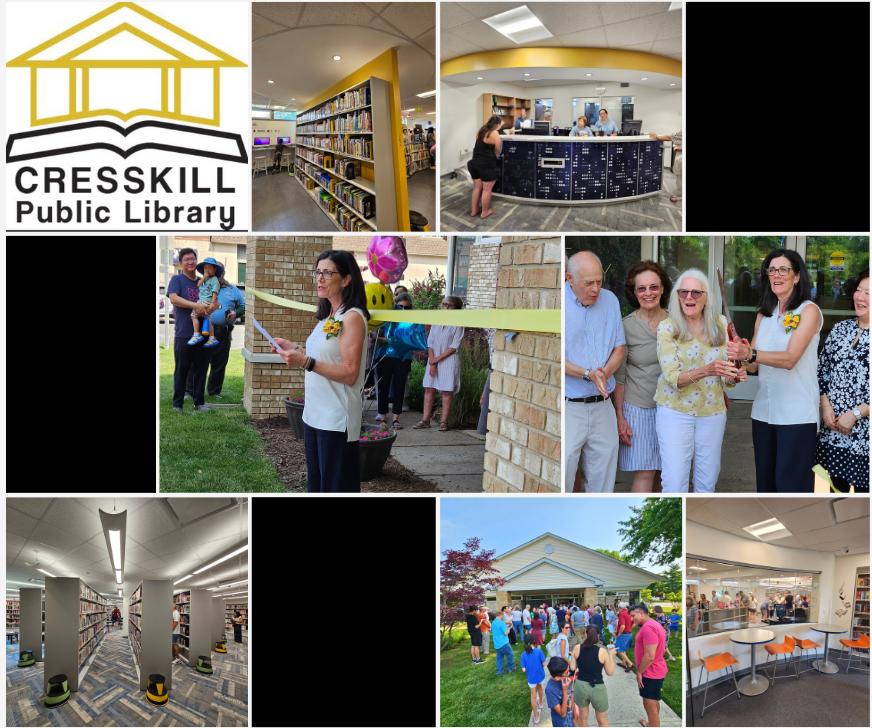Two years ago, The Oracle reported on the acquisition of the Ann Oliver House by the Village of New Paltz. Stewart’s Shops donated the property to the Village, who began the process of transferring it to Esi Lewis, founder/director of the Margaret Wade-Lewis Center (MWL Center) and the daughter of Margaret Wade-Lewis herself, former Black Studies professor, administrator and student advocate. Now, the house is under renovations, with the MWL Center working with Lothrop Associates Architects to restore the house as a new center for their organization. Recently, the MWL Center acquired grant assistance from the Preservation League of NYS to conduct a condition report, in which a qualified expert made recommendations and ultimately aided in formulating a restoration plan — one that would honor the major achievements of both New Paltz’s historic and current Black community.
The 19th century boasted new change and achievements for the Black community, with New York’s Gradual Emancipation Bill slowly giving more freedom to children of enslaved peoples. For New Paltz, some major strides included the ownership of land and right to vote. John Hasbrouck, who was emancipated in 1827, was one of the first Black people in New Paltz to vote. That number soon rose as more and more people acquired land. The rise for Black voters did not come without its pushbacks, however by 1870, 20 out of the 47 Black men in New Paltz voted in the Presidential election, a major turnout. These achievements and reclamation of their autonomy would help bolster New Paltz’s Black community. In further establishing the community, residential neighborhoods were built, with the Ann Oliver House being one of them.
The Ann Oliver House — standing at two-stories high with 1,232 square feet of space — was first built in 1885 for Ann Johnson Oliver. She was the widow of Union soldier Richard Oliver and the mother of their three children. Her house existed among tens of other houses along Church, Broadhead and Mulberry Streets, which formed the New Paltz residential neighborhood. The house was built by Jacob Wynkoop, a Civil War veteran, Black landowner and prominent political activist in the New Paltz community. He constructed many of the other residential properties as well. His work extended beyond carpentry, founding the “Colored Republicans Club” for Black political activists, as well as co-establishing the “Grand Army of the Republic,” one of the first advocacy groups campaigning for the election of Rutherford B. Hayes and pushing for veterans’ rights. His activism and involvement in the community further added to the significance of the Ann Oliver house, as a Black-owned, Black-built, historical site.
Following the death of Ann Oliver in 1904, the house fell into disrepair. Lack of funds and property maintenance led to the building’s condemnation. Many other houses from that period were either demolished or rebuilt, though the Ann Oliver house remained standing. This was not without the threat, however, of the house being lost to history forever. It wasn’t until the construction of a new Stewart’s that the corporation acquired the property, initially unaware of its significance. Negotiating with the Village of New Paltz and its Preservation Commission, Stewart’s sectioned off the house along with the land for $1. In searching for new ownership who could honor the legacy of Ann Oliver and Jacob Wynkoop, the Village settled on Esi Lewis, who sought to establish the property as the new home of the Margaret Wade-Lewis Center.
The Margaret Wade-Lewis Center’s mission, according to their website, is “to engage, empower, educate and heal the community through history and culture.” The organization coordinates many events throughout town, celebrating and uplifting Black culture and achievements. From holiday events, such as Juneteenth and Kwanzaa, to their collaborations with other institutions such as the Elting Memorial Library, the MWL Center works tirelessly to promote education on local Black history and culture, while also uplifting and celebrating accomplished Black community members, like musicians, poets and other prominent figures.
Even without a home yet, the MWL Center offers a garden bench and potted flowers in the summer, for community members to take a seat and reflect. In a Facebook post made on July 29, 2022, community member Brenda Hicks-Hush expressed her support of the cultural center, stressing, “Our children and adults need to hear of Black achievements and their contribution to New Paltz and Ulster County. Much history is taught about slavery, but people need to know of all the achievements and successful stories of Black people.” Her words underscore the importance of not only learning the struggles of the Black community, but in conjunction, celebrating their victories and showing support for their work, whether it be in the arts or activism. For the Margaret Wade-Lewis Center, they strive to do all that and more.
It was on Sept. 21, 2022, that the Ann Oliver House was officially removed of its label as a condemned structure, meaning substantial renovations could begin. This was a major victory for the MWL Center, as they soon would hold fundraisers to aid in funding the restoration. Volunteers came and cleaned out a majority of the debris and damage, a major step towards progress.
Regarding the future, receiving the state grant and working with the Lothrop Associates Architects provides the MWL Center with more resources to further move towards their goal. For now, they’ll continue promoting and elevating Black heritage and culture, honoring the legacies of Ann Oliver, Jacob Wynkoop and Dr. Margaret Wade-Lewis and educating and bettering the wider community of New Paltz.
The organization is currently taking donations to fund the restoration, which can be found on their webpage at www.mwlcenter.org. For future updates, follow them on Facebook and Instagram @mwlcenter.









